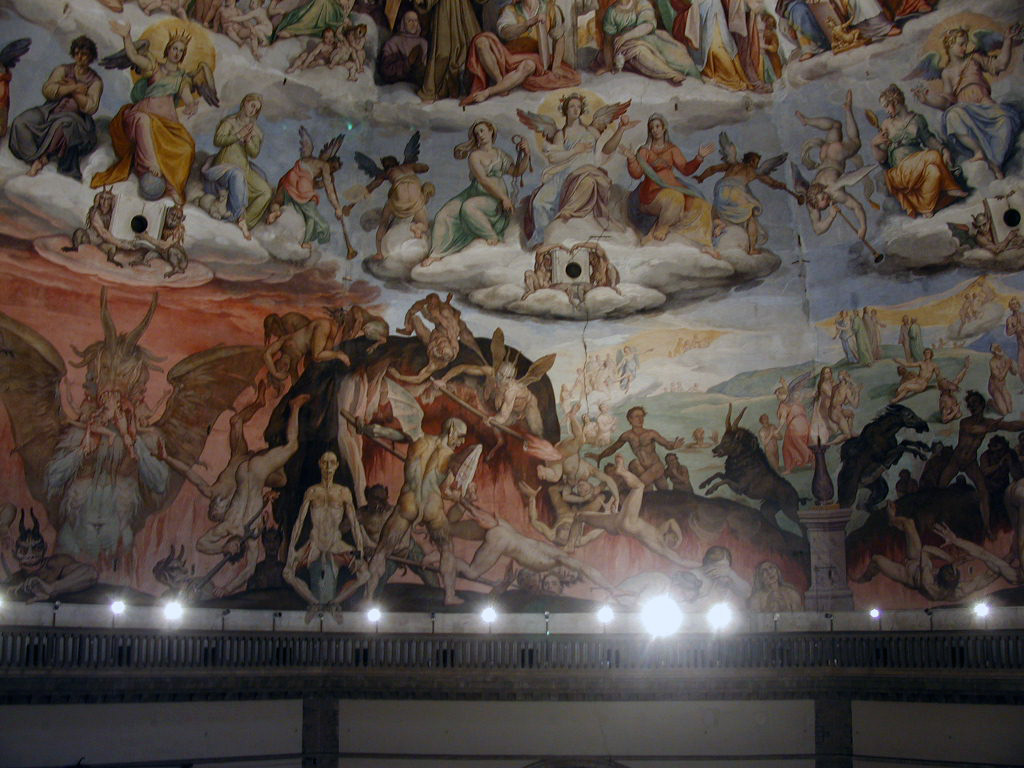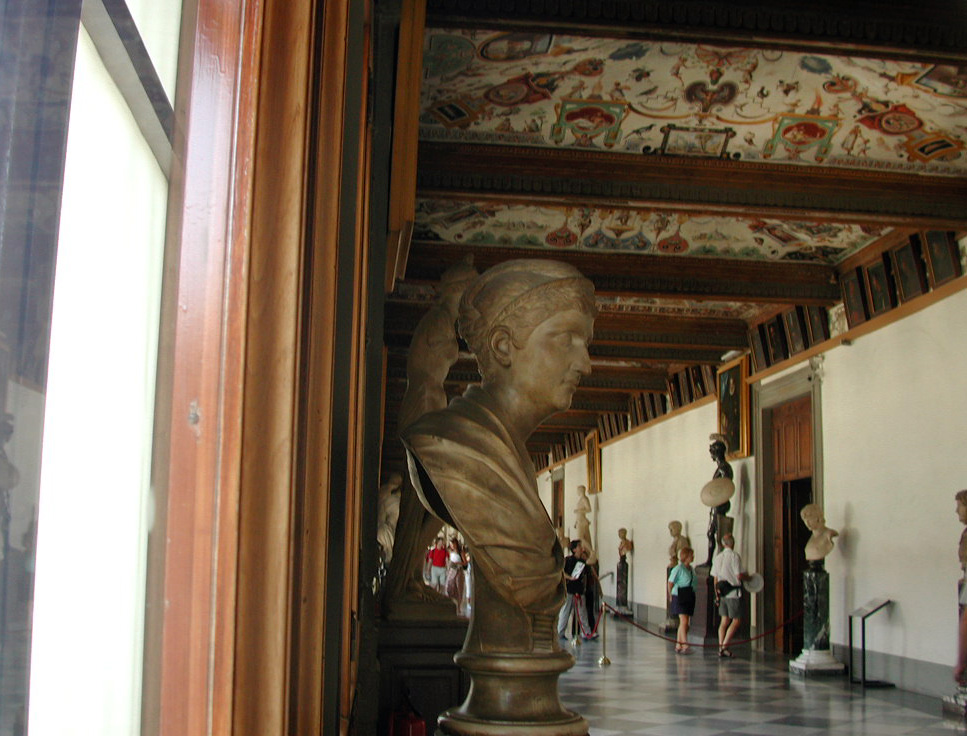
Italy 2001
Florence
 |
Florence was established for veterans of Julius Ceasar's campaigns and known as Colonia Florentina, the flourishing colony, in the 1st Century AD. In 1125 a rapid and at times violent expansion ultimately includes all of Tuscany. Interestingly, Florence was a Republic that resisted being ruled by a single leader until the 16th Century, when the leader of the Medici became the Duke of Tuscany. Even more amazing, the town and individuals flourished while the Republic was wracked by scandals, murder, and intrigues. Great masterpieces were produced during those tumultous four centuries when Florence was a republic. Two industries continued to keep the coffers full, wool and banking. The latter eventually replaced the Jews as principle money lenders to the royalty of Europe.They invented the cheque, a previously unheard of way of collecting money based on a note, in a different location than where the credit originated. Of course, as the Templars of old discovered, too much wealth concentrated in one place, and too much debt owed by Royalty, can have some serious consequences. KIngs can go to war and then default, as did KIng Edward III of England in the 14th Cent. It brought the Florentine bankers to their knees, but by the 15th Cent. the Florentine banking houses had recovered and one of them was the house of Medici and by 1434, Cosimo de Medici is the most powerful man in Florence. To the good fortune of the artists, the powerful families of Florence, while maybe atodds with each other, were also great patrons of the fine arts - and of the study of humanism. The power of the Medici extends well into the 15th Cent and even included two Popes. However, by the end of that century a clash with the French under Charles VIII, proves disastrous for the by then weakend Medici. For a detailed account of the long and twisted tale, in part due to the several city states, Naples, Venice, and Milan, all competing for power, can be read in thisffull historical account of Florence. |
 |
Clearly a city you will love to walk around in |
The Florence Baptistry of St. John
 |
Construction of the current building was started in AD 1059 and it was opened in 1128. The precursor to the Baptistery was first described in 897 and is probably sitting on the remains of a Roman temple decicated to the God Mars dating back to the 4th - 5th Cent BC, which makes it the oldest religious monument in Florence. |
 |
One of the golden door panels close up, each of which depict multiple scenes from the Old Testament. The panels are surrournded by 24 small bronze busts of famous Florentines, including one of the artist himself, Lorenzo Ghiberti |
 |
Inside of the small dome, a stunning mosaic. I was jokingly saying that when the last monk placed the last stone, they must have collectively fainted, and then the party would begin. The Baptistery is octagonal and the mosaic extends in each direction equally. |
Basilica and Cathedral Santa Maria del Fiore
 |
 |
The Baptistery is on the left in front of the Cathedral |
The Piazza de Duomo and the Cathedral of Santa Maria del Fiore (AD 1296) |
 |
This is how the cupola of the Duomo is painted. Not bad, right? |
 |
Until you walk on that walkway beneath it and are dwarfed by the immense paintings. To enter the walkway you climb up inside of the dome |
 |
 |
These load transfer beams are part of the secret of creating the largest dome in the world |
Philippo Brunelleschi destroyed the one scale model and all of the plans to hide the secret |
 |
Learn more of the mystery of the great dome here |
 |
From up here you also get up close and personal with the Cathedral's bell tower |
 |
On the other side of the Arno River there are a few more interesting places to visit, like the Piazzale Michelangelo |
 |
Day or night, it's great and safe to wander around and enjoy spectacular views |
 |
 |
National Central Library |
Basilica San Miniato al Monte, called one of the most beautiful churches in Italy (AD 1013) |
 |
One of the fine graveyard statues standing over the graves of people such as Giovanni Meyer (founder of the Florentine children's hospital), Mario Cecci Gori (film producer and pres. of football club Florentina), and Carlo Collodi (spiritual father of Pinnochio) |
 |
And what a view, even on a hazy day, impressive. Also, one of the monks who reside here. |
 |
Florence has been a merchant center for 2000 years, and I am sure even Roman senators were fearful of letting their spouses loose here |
 |
The next and most important place to visit is the Palazzo Veccio, ahead, and at right the Loggia dei Lanzi sculpture display |
 |
 |
Next to the palazzo lies the Uffizi, packed with great art treasures |
One of the many sculptures on the facade of the building across the Uffizi |
 |
Upstairs in the Uffizi |